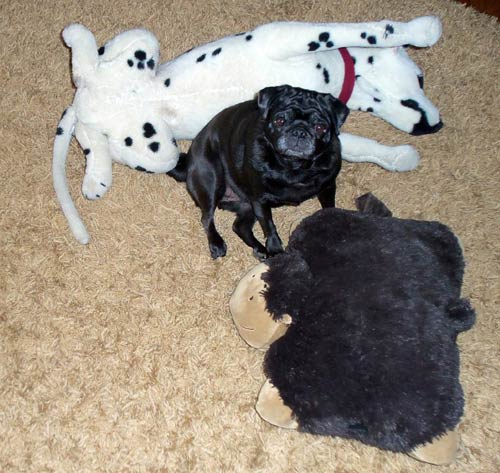I'm Just Little! – Important Reminders for Toy Dog Owners
AKC GoodDog! Helpline Trainer Breanne Long, owner of two Papillons, discusses the different needs of toy dogs and important things to keep in mind if you own a small dog.
The world of a small dog is a very big place. People and dogs are bigger, many cats are bigger, and jumping onto the bed requires a running start! Dog owners who have only ever had medium or large dogs don't understand that there are a few fundamental differences in caring for a small or toy dog.
1.They get hurt more easily. Toy and small breeds have finer bones and thus can get injured more easily than a big dog. Additionally, their small size makes them hard to see, and they often get underfoot. Teach your small dog to go to their crate or bed while you're working around the house so you won't trip over her and accidentally hurt her (or you!).
2. Big dogs target them. Little dogs, especially those with a lot of hair, often look like toys to big dogs. The more quickly and erratically they move, the more likely it is that a big dog will give chase. Some small dogs are quick enough to outrun a big dog, but most are not, so for everyone's safety; don't allow a big dog to chase your little one!

3. The world is a scary place. When your big dog comes rushing up to a little dog, don't be offended when the little dog's owner scoops her up to get her out of harm’s way. It's not a personal insult to your larger dog. Indeed, your big dog may be extremely friendly, but a friendly invitation-to-play-paw-swipe from your well-meaning big dog can cause serious injury to a small dog.
4. House training is harder. Their bodies are smaller, so they're physically unable to “hold it” as long as their large-breed puppy counterparts. Additionally, their messes are smaller and easier to clean, so many people don't make it as much of a priority to house train their small dog. However, it is cleaner and more sanitary to house train your dog, even if you use a litter box or potty pads. Small dogs are house trained the same way as big dogs – with supervision and consistency. Just remember that your small dog will likely have to “go” more often than your big dog!
5. They don't have to be tiny terrors! The destruction that a small dog can cause, when left untrained, is far less than the destruction a big dog can cause. For that reason many small dog owners don't think it's necessary to teach their little dog to walk nicely on a leash or not resource guard food or toys. Just because they're little, doesn't mean the same rules shouldn't apply! Exercise and mental stimulation goes a long way towards remedying behavior problems. Little dogs may not need the quantity of exercise as their larger cousins so you can often exercise them indoors! Games of hallway fetch, hide and seek, and obedience and trick training can satisfy their mental and physical exercise needs!
For more tips and advice – for all sizes of dogs, enroll in the AKC GoodDog! Helpline, a seven-day-a-week telephone support service staffed by dog trainers: www.akcgooddoghelpline.org


